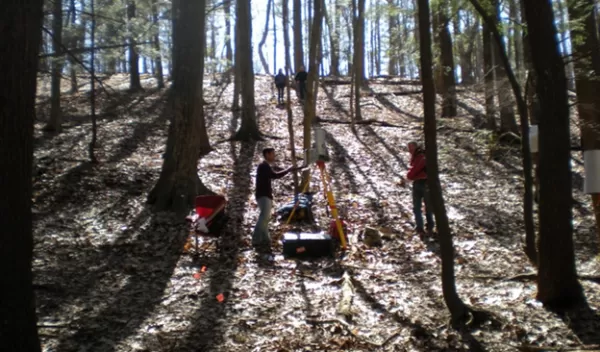
Study reveals new clues about how 'Earth's thermostat' controls climate
Rocks, rain and carbon dioxide help control Earth's climate over thousands of years — like a thermostat — through a process called weathering. A new study led by Penn State scientists may improve our understanding of how this thermostat responds as temperatures change. Results from the U.S. National Science Foundation-supported study are reported in the journal Science.
"Life has been on this planet for billions of years, so we know Earth's temperature has remained consistent enough for there to be liquid water and to support life," said Susan Brantley at Penn State. "The idea is that silicate rock weathering is this thermostat, but no one has ever really agreed on its temperature sensitivity."
Because many factors go into weathering, it has been challenging to use results of laboratory experiments alone to create global estimates of how weathering responds to temperature changes, the scientists said.
The team combined laboratory measurements and soil analysis from 45 soil sites around the world and many watersheds to better understand weathering of the major rock types on Earth and used those findings to create a global estimate for how weathering responds to temperature.
"When you do experiments in the laboratory versus taking samples from soil or a river, you get different values," Brantley said. "We looked across those different spatial scales and figured out how we can make sense of all these data geochemists around the world have been accumulating about weathering on the planet. This study is a model for how we can do that."
Weathering represents part of a balancing act of carbon dioxide in Earth's atmosphere. Volcanoes have emitted large amounts of carbon dioxide through Earth's history, but instead of turning the planet into a hothouse, the greenhouse gas is slowly removed via weathering.
Rain takes the carbon dioxide from the atmosphere and creates a weak acid that falls to Earth and wears away the surface of silicate rocks. The byproducts are carried by streams and rivers to the ocean where the carbon is eventually locked away in sedimentary rocks, the scientists said.
"In a soil profile, you are seeing a picture of soil where the camera shutter was open for sometimes a million years — there are integrated processes happening for a million years and you're trying to compare that with a two-year experiment," Brantley said.
Brantley said the field of critical zone science — which examines landscapes from the tallest vegetation to the deepest groundwater — has helped scientists better understand the complex interactions that influence weathering.
“Rocks of all kinds are formed at high temperatures and pressures,” said Richard Yuretich, a program director in NSF’s Division of Earth Sciences. “Their breakdown into soils removes significant amounts of carbon dioxide and water from the atmosphere, processes that are also related to temperature. This analysis helps us better model the rate of climate change.”


